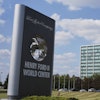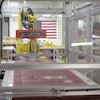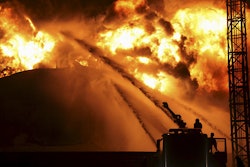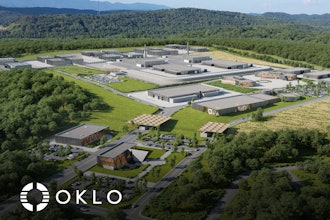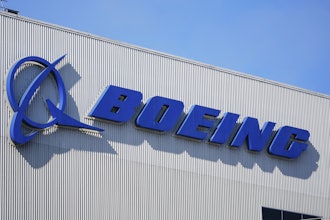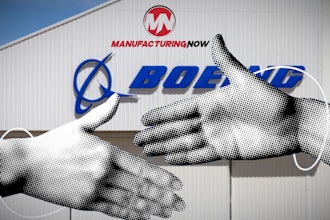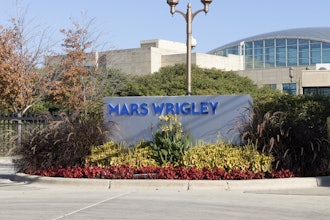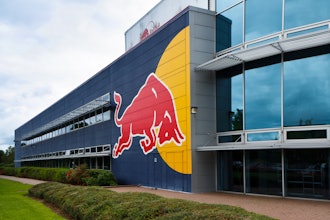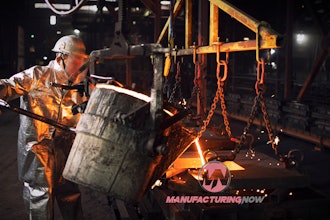The Factory of the Future
A practical guide to harnessing
new value in manufacturing.
2
HOW MANUFACTURING SOURCING, SUPPLY
CHAIN MANAGEMENT AND PRODUCTION
OPERATES TODAY.
There are, of course, the ongoing challenges.
Product and supply chain complexities are
unavoidable. Rising raw materials and energy
prices require constant monitoring and
reassessment. The global marketplace is defined
by aggressive competition and pace of activity.
Small, hungry, local enterprises are often better-
placed to compete on price than multi-national
organizations trying to balance economies of scale
with meeting customer needs in regional markets.
Production lines have to be able to produce shorter-
run products for specific markets and end user
needs. And manufacturers may operate multiple
sites in different time zones producing
the same item.
The shift from capacity to capability
To streamline operations, manufacturers are looking
to measure success based on production capability
and flexibility rather than efficiency and production
capacity. The trend is to move away from a make-
to-stock manufacturing approach and mass
production, and embrace more of a quality-driven,
make-to-order approach to meet defined and
specific customer needs.
As a part of this shift, plant floor staff are becoming
more ‘knowledge workers’ than operators, not only
having a technical understanding of the machines
they run, but also having the analytical and decision-
making skills to make adjustments to machine
operation to support the most efficient means of
delivering the products required.
With around $900 billion of waste in global manufacturing supply chains*, it’s clear
there’s scope to cut costs dramatically and create new value. As manufacturing
regains favor with economic and political stakeholders worldwide, progressive
enterprises are exploring ways to work more efficiently using asset information,
system integration and process innovation.
*Source: IDC Manufacturing Insights
3
Living lean
There’s significant potential to adapt existing
processes and work with greater precision.
Companies that follow lean principles, like building
to actual customer demand – rather than adhering
to forecasts – and bringing material to the plant only
when needed as opposed to keeping stockpiles on
hand, operate more efficiently.
Increasing efficiency, especially where materials
handling, energy and labor costs are concerned,
is far easier with visibility not only into individual
processes, but also to a network of connected
devices across the entire business ecosystem.
Every point in the supply chain where visibility is
less than complete can potentially harbour
inefficiencies. Conversely, every visible asset or
event that can be identified and placed in context
can be potentially improved.
Wasted data
As the number of devices linked to manufacturing
production processes has increased dramatically,
so has the amount of data available. However,
much of this information sits in disjointed data silos.
In supply chain operations, warehouse management
systems and inventory management systems are
implemented at a local distribution centrer, with
proprietary integration back to an ERP system. While
some of this data may be accessible centrally, the
actual asset tracking devices often lack real-time
connectivity, giving only a historical view rather than
a current perspective.
When this scenario is replicated across the
enterprise, with innumerable devices running
disparately, the inability to harness the data
available is just another manifestation of wider
system inefficiency.
By capturing the data, and turning it into actionable
information that provides full visibility into the supply
chain, enterprises can streamline their processes
and move towards optimal production.
THE FACTORY OF THE
FUTURE IS CENTERED
ON VISIBILITY
The key for manufacturers is to know exactly what’s
happening in front of and around them. At the heart
of the factory of the future will be data, visible,
comprehensible and actionable.
This authentic, accurate, accessible data, point-
in-time or real-time, gives status of machine,
component or finished goods, enabling existing
processes to be more precisely managed, and new
value to be created.
To succeed, best-in-class manufacturers give their
physical assets a digital profile that enables them
to know the real-time location and condition of
those assets, and timing and accuracy of the events
occurring, throughout the value chain. Data visibility
empowers you to orchestrate production and deliver
to order, cutting out operator waiting time, reducing
defects, and eliminating over-production.
With complete visibility of the relationships and
interdependence between items, processes
and people, and transactions taking place,
enterprises can move closer to the goal of true
manufacturing visibility.
Real-time process visibility leads to enhanced
business intelligence that results in more
informed decision-making and more efficient
manufacturing performance.
4
MAKING DATA VISIBLE: KEY DRIVERS FOR CHANGE
Advances in production technology and innovative
thinking are driving better visibility of objects,
actions and events affecting the manufacturing
supply chain. By incorporating these advances into
your enterprise, you can see where inefficiencies
are happening, and where a change of approach
will move you towards operational excellence.
Strategic big data
Enterprises are looking at the advent of big data as
a vast mine to gain deeper, more actionable insight
into their operations and processes, and do more
with less. The richness of big data is more than just
the volume of data, but also the velocity and value
of the data.
New technologies have the potential to gather
and assimilate unprecedented levels of production
data. This helps you to identify connections within
information and make intelligent use of it.
The Internet of Things
The number of devices associated with business
operations continues to increase. With the focus
on better and more actionable business analytics,
solutions that capitalize on the Internet of Things
are rapidly gaining momentum, especially when
they are Cloud-ready and accessible across the
enterprise and beyond.
Actionable analytics
In real-time, you now have the ability to assess
information not just to pinpoint trends, but also
to act on them and improve performance as a
consequence.
Internet of Things-enabled devices provide ‘right
now’ visibility into supply chains, distribution
centers, land and seaports. They also drive very tight
process-driven tasks where instantaneous feedback
and control are essential.
Businesses can use this data to optimize processes,
reduce shrinkage, and provide better security and
safety throughout the workplace. Deep visibility into
mission critical operations provides the measurable
metrics enabling the enterprise to make better-
informed decisions and inspire innovation.
Integrated ecosystems
Where, historically, a diverse, disparate mix of fixed
and mobile systems and devices have operated
in silos, bringing together corporate and personal
technology into a manageable whole creates
efficiencies and delivers new value.
Connectivity and consistent visibility across
operations, supply chains, and business partners
streamlines processes and operations, driving better
customer service and loyalty. Tighter processes
mean faster inventory turns, reducing the need for
on-hand inventory. Eliminating waste and improving
asset tracking can boost product quality while
reducing operating and capital expenditure.
The virtual plant floor
The virtual plant floor is an integration of all sites and
systems supported by complete, connected supply
chain visibility. This focuses on how an issue at one
site can affect production at another, and how to
overcome these problems.
5
AIDC (Automatic Identification and Data Capture)
solutions and advances in technology enable
manufacturers to see what’s happening with all their
operational events – assets, transactions and people
– in real-time. When this visibility is aligned to
single network connectivity, it creates an integrated
production environment with data excellence
at its heart.
Not only can you see where everything is, and what
it’s doing, but you can also see everything relative
to everything else. Business decisions are made in
full awareness, leading to greater efficiencies and
more ability to fulfill customer needs precisely while
meeting your own business goals.
These technologies include:
• Barcodes
• Radio Frequency Identification (RFID)
• Global Positioning System (GPS)
• Environmental sensors
• Real-Time Locating Systems (RTLS)
Barcodes
Used mainly as a means of tracking stock in retail
stores, barcodes have been used in increasingly
diverse settings for a wider range of functions.
In manufacturing, barcode applications have spread
throughout the enterprise to include warehousing,
customer service functions, time, attendance,
and package delivery, as well as the assembly
line operation itself, helping to improve data
management and accessibility, and reduce costs.
The benefits of barcodes
Improved data accuracy
Improved data accuracy is the single most common
motivation for putting a barcode system in place.
Companies with integrated barcoding systems that
enable users to scan barcodes rather than type
numbers commonly achieve 99% data accuracy.
For companies in which data errors are a mere
nuisance, the difference between 85% and 99%
may not seem that extreme. But for manufacturing
enterprises looking to optimize efficiency, the goal
is 100% accuracy. Barcoding is one of the most
cost-effective tools that these organizations have
to ensure data credibility and reduce the impact of
human error.
Efficiency benefits
Besides providing near-perfect accuracy, barcoding
also enables users to work faster, without sacrificing
accuracy. When factoring in the time it takes to
correct simple data entry errors, it is easy to see
the improved efficiency that comes with barcoding.
In addition, by providing computer systems the
capability to ‘see’ exactly what is happening,
barcodes enable instant conversion from physical
actions into digital transactions. This conversion of
former manual tasks to electronic processes occurs
in real-time, increasing efficiency and allowing
management to make decisions based on current
data and personnel to be employed in other, more
productive areas.
AIDC SOLUTIONS AND HOW THEY DRIVE
BETTER PROCESSES
6
Consistency
Barcoding, particularly in fast-paced industrial
environments, enables consistent and predictable
operations for enhanced product quality by
combining data management functions and
preventing bottlenecks at data entry stations. Auto-
ID systems usually operate at a defined pace, either
self-determined by the printer’s maximum speed or
triggered by the action of another device.
For instance, in an assembly line, operations that
were previously slowed by congestion at the point
of data entry can now progress smoothly through
a system of automated print-and-apply labelling
machines and fixed scanners. In addition, employing
standardized barcode symbologies and compliance
labeling ensures that barcode information is
captured and relayed in a way that is universally
understood and accepted.
Improved inventory and
asset management
In manufacturing, the barcode contains internal
information such as production line number, date
of completion, materials used, serial numbers and
miscellaneous quality control information.
By scanning the label in the shipping department,
the company can identify the exact inventory,
in real-time, as well as the precise date and
time that any product leaves the warehouse.
RFID
Manufacturing operations are increasingly adopting
RFID tags. These carry an RFID transponder,
commonly called a ‘smart label’ to complement the
barcode and text on the labels. Unlike barcodes,
RFID technology requires no line-of-sight between
the object and the reader. This solution enables the
identification and recording of entire pallet loads
in less time than it takes to scan a barcode
shipping label.
Besides improving accuracy, RFID and barcode data
collection is faster than manual collection, which
improves labor productivity. Replacing paper forms
with much smaller barcode labels and embedded
RFID tags produces media savings that frequently
reach six figures annually, even for companies
with moderate levels of production tracking and
shipping activity.
As customers demand build-to-order and just-in-
time deliveries from their suppliers – replacing the
traditional build-to-stock model – traceability and
data collection at the item level is critical. A relatively
small investment in an RFID tracking system will
ensure scheduling and materials applications will
deliver benefits, leveraging the investment in those
more expensive planning applications.
Simplifying materials management and
streamlining production line applications
In terms of stock management, after an item’s
inventory routing instructions are encoded and
labelled at the receiving dock, on arrival at the
warehouse, users can use a mobile device to scan
the RFID to record its arrival. The host materials
control or warehouse management system (WMS)
then directs the worker to the appropriate putaway
location based on the item’s size, shelf-life, and
predicted consumption schedule.
Most businesses apply RFID and barcode shipping
labels when finished goods leave their facility. The
most efficient producers have learned that pushing
their identification and tracking systems as far back
into the production process as possible provides
tremendous labor and material savings.
RFID and barcode systems provide a high return-on-
investment by reducing data entry and processing
time, improving quality, and boosting the real-time
performance of enterprise software applications.
Information today is a valued component of all
manufacturing, distribution, and retail operations,
thus presenting a form of currency in many business
relationships. Companies that can document the
product lifecycle and tracing history to the item
level – while meeting industry and other regulatory
mandates – can win substantial new business and
build strong customer loyalty.
7
Real Time Locating Systems (RTLS) deliver
precise visibility of critical assets – supply chain,
manufacturing, and human, in real-time. For
enterprises with geographically dispersed sites, this
means having end-to-end visibility and traceability
of all containers, pallets, and packages. For
manufacturers, it enables intelligent management
and flow of all critical assets, whether in the facility
or in the yard.
RTLS solutions can incorporate a mix of barcode,
RFID, GPS and sensory technologies that mark,
track and show the status of assets in real-time.
Where passive technologies such as barcodes
simply locate an item, the active RFID element of
these solutions delivers both live location and
actual status.
Simplify asset management
Controlling hundreds or thousands of assets
throughout large indoor and outdoor production
environments is a daunting challenge. RTLS allows
operations to find assets in seconds, as opposed to
taking hours using a manual process. Beyond the
ability to locate a sub-assembly or final product on
demand, operations can use the tracking data
to optimize processes, workflow cycle time, and
dwell time.
RTLS enables users to view the precise location
of assets and eliminate time-consuming manual
searches and audits. Location data integrates into
existing enterprise resource planning systems,
allowing enterprises to realize more value from their
IT infrastructure. Also, real-time enterprise visibility
minimises the need for equipment relocation.
Instead of moving equipment to central locations,
assets can be stored closer to the point of use,
which increases speed of production.
Improve enterprise resource planning
Users can add RTLS and workflow rules based on
their unique needs and collect metrics for analyzing
processes, and identify areas that miss key
performance objectives. Timely knowledge of asset
movements helps speed up tasks and transactions,
enabling accurate forecasting and improving asset
value while reducing the order-to-cash cycle.
Whether tracking containers through a supply chain,
optimizing manufacturing processes, or providing
wide-area asset traceability, RTLS communicates the
physical location of assets by zone, yard slot, and/
or intelligent interactive graphical mapping along
with historical visibility into the asset’s location, with
accuracy of within a few feet.
The optimal RTLS platform integrates hardware and
software with existing BI and ERP solutions to help
enterprises align their strategies cross-functionally.
When coupled with passive RFID and barcode
systems, RTLS enables you to track, locate, and
manage critical assets across the value chain.
RTLS
©2014 ZIH Corp. All product names and numbers are Zebra trademarks, and Zebra, the Zebra head graphic and ZPL are registered trademarks of ZIH Corp.
All rights reserved. Bluetooth is a registered trademark of Bluetooth SIG, Inc. Apple, iPad, iPhone and iPod touch are trademarks of Apple Inc., registered in
the U.S. and other countries. All other trademarks are the property of their respective owners.
Corporate Headquarters
+1 800 423 0442
[email protected]
Asia-Pacific Headquarters
+65 6858 0722
[email protected]
EMEA Headquarters
+44 (0)1628 556000
[email protected]
Latin America Headquarters
+1 847 955 2283
[email protected]
Other Locations / USA: California, Georgia, Illinois, Rhode Island, Texas, Wisconsin Europe: France, Germany, Italy, the Netherlands, Poland, Spain, Sweden,
Turkey, United Kingdom Asia Pacific: Australia, China, Hong Kong, India, Indonesia, Japan, Malaysia, Philippines, Singapore, South Korea, Taiwan, Thailand, Vietnam
Latin America: Argentina, Brazil, Colombia, Florida (LA Headquarters in USA), Mexico Africa/Middle East: Dubai, South Africa
HOW AND WHERE
TO USE AIDC
Warehousing
Use 2D barcodes, intelligent automation and RFID
incorporating RTLS, GPS and sensoring to track and
trace items as they move through the supply chain,
and monitor the movements of employees and
other assets. Enable full visibility into warehouse
operations to increase efficiencies and reduce costs.
Inbound and outbound logistics
Use a combination of technologies as above to
move freight in and out of crowded shipping and
receiving areas quickly and accurately.
Asset management
Warehouses and manufacturing plants incorporate
a mix of fixed and moving assets, and to operate
efficiently, it’s vital to know where everything is.
AIDC solutions increase visibility, productivity and
profitability by delivering real-time asset location
and status.
Work-in-progress
Assembly lines move fast, and every piece –
potentially thousands in complex operations – needs
to be tracked. Real-time tracking and tracing of all
parts moving to and from the assembly line enables
streamlined production without delays, unnecessary
downtime or excess labor costs.
Breakdown and putaway
Accurate labeling and tagging of all goods before
putaway is essential for authentic lean production.
Item-level 2D barcodes and RFID provide quantities
of specific items, batch and serial numbers and
other relevant information.
WHY ZEBRA?
Zebra’s extensive portfolio of Auto-ID technologies,
including 2D barcodes, intelligent automation and
RFID incorporating RTLS, GPS and sensoring, turn
the physical into the digital to give assets and
operational events a virtual voice.
Layering these technologies across the enterprise
gives you complete visibility of these assets. You
can see their real-time location and condition, and
monitor the timing and accuracy of the events
occurring at every stage of the manufacturing
process. This Visible Value Chain enables you to
identify opportunities for leaner manufacturing and
create new value with existing assets.
P1071711 (05/14)
Find out more about the Factory of the
Future, visit
www.zebra.com/manufacturing-
The Factory of the Future: A practical guide to harnessing new value in manufacturing
Zebra takes your organization into the future with products that connect wirelessly, integrate seamlessly and provide wall to wall visibility. Knowing what is happening, where it’s happening and why it’s happening is key in better understanding your business’s needs.
Latest in Home
